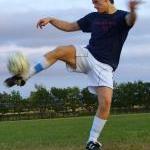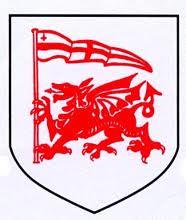Main Menu
Latest Blog Entry
User login
Using RPE to predict 1RMs- Harrison Evans
 How to use RPE to predict your strength
How to use RPE to predict your strength
Much of the strength related exercise prescription advice delivered by the American College of Sports Medicine (ACSM) prescribe intensity relative to an individual’s maximal strength (1-RM)
This is subsequently used in gymnasiums and clinical environments. For example, an imposed demand of 40% 1-RM may be adequate for a strength related cardiac rehabilitation programme, and a few reps at 90% of 1-RM may be used to increase explosive power in athletes.
However, it’s not always safe to perform an initial 1-RM test (in many clinical settings) and may be time-consuming (when working with a large group of athletes).
Problems with predictions over actual results
Various prediction equations have subsequently been developed, but not without large and potentially dangerous error. My investigation used perceived exertion (a perception of how hard we feel we are working) to predict 1-RM.
I used 20 healthy students (yes, healthy students do exist) a relatively small sample but large enough to examine validity in this case. I tested their maximal strength for upper body (biceps curl) and lower body (leg extension) exercises.
I then calculated 20%, 40% and 60% of individual 1-RM and asked individuals to perform two repetitions at each intensity for each exercise. For these tests the subjects were blindfolded and the load intensities were delivered in a random order to eradicate any predetermined judgments about the load.
After two reps at each intensity, subjects were required to state an RPE ranging from 6 (no exertion) to 20 (maximal exertion). From this, the RPE values at the three submaximal intensities were plotted and regression analysis conducted to extrapolate to 20 (theoretical maximum on the scale).
Without getting bogged down in the statistics, there was no significant difference between the actual 1-RM and the predicted 1-RM, and the correlations between actual and predicted 1-RM were strong.
What does this actually mean?
Findings show that it is plausible to use an index of how hard we feel we are working to predict our maximal strength in both upper and lower body exercises.
It’s easy to criticise this on a number of levels:
- Sample population used
- Sample size
- Exercises performed
- Errors in statistical tests
- Applicability to sports-related settings
amongst others. I don’t profess this study to be revolutionary or add immediate gain to the fitness industry, nor is it possible to use this as a standardised prediction protocol in its bare form.
It is however novel in its methods, something that has never been done before, providing a base for which others can validate with different populations and muscle groups.
Using just two submaximal repetitions makes this an extremely quick and low-risk method for predicting strength.
I welcome all feedback, questions and criticisms, without these I can’t improve my future studies. So if you’re a coach, teacher, athlete or fellow student I need you, lets start some hot debate about why this is good or simply not good enough for you. Bring it on!
Harrison Evans is studying for his Msc at Exeter University. His research can be seen here
Client Testimonials
 London Welsh RFC
London Welsh RFC
James has provided a wealth of experience and expertise to the Academy set up at London Welsh RFC in recent years. He has addressed both the physical and mental development of the players through innovative, player and position specific programmes which have resulted in each individual within the group developing towards their potential.
More

